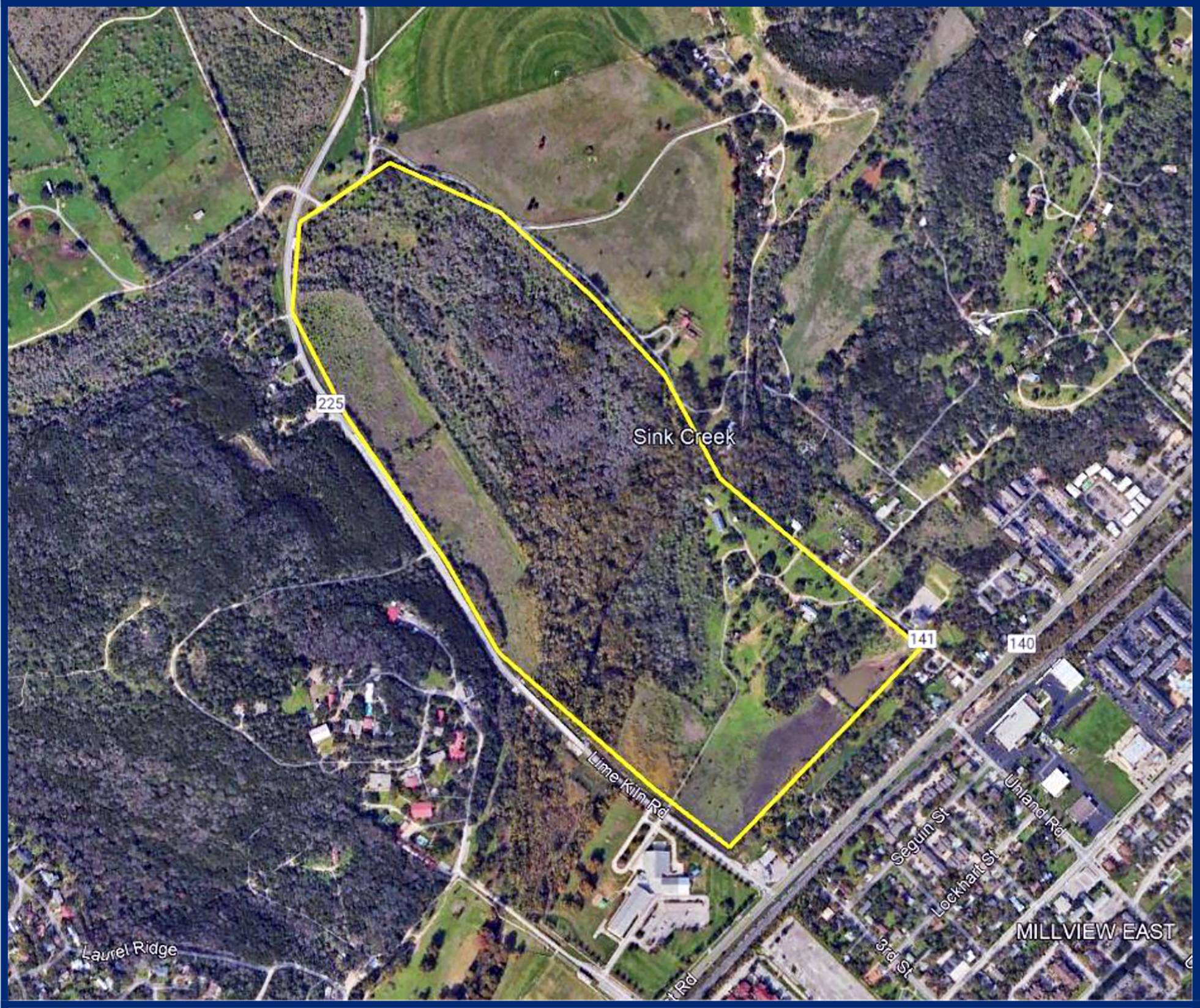The Texas State University System Board of Regents has authorized Texas State University to purchase an environmentally-sensitive tract of land of approximately 128 acres northeast of Spring Lake and The Meadows Center in San Marcos.
The board approved the $4.5 million purchase during its Nov. 20 quarterly meeting in Huntsville.

The property, located at 145 and 223 Spring Road, lies within the Sink Creek watershed and encompasses Sink Spring and Sink Creek, which feed into Spring Lake. In acquiring the property, TXST is committed to providing good environmental stewardship of the land.
“Sink Spring and Sink Creek are directly connected to San Marcos Springs and the San Marcos River,” said Robert Mace, Ph.D., director of The Meadows Center for Water and the Environment. “The university’s acquisition of this property protects the quantity and quality of our water and provides unique research opportunities for our students.”
In conserving Sink Creek, this purchase will provide a variety of ecological and socially beneficial outcomes. The Sink Creek property is situated between two important and ecologically sensitive protected areas. Downstream it flows to the San Marcos Springs that form Spring Lake and the headwaters of the San Marcos River on the TXST campus. Upstream it collects drainage from a large city-owned greenspace over the Edwards Aquifer Recharge Zone referred to as the Spring Lake Natural Area. The Sink Creek site contains the floodplain and riparian corridor of Sink Creek.
“We at the San Marcos River Foundation are overjoyed to know that this critical piece of Edwards Aquifer Recharge Zone land will be protected in perpetuity,” said Virginia Parker, executive director of the San Marcos River Association.
“Through dye trace studies done by the Edwards Aquifer Authority, we know that the karst features located within this property are directly tied to the springs that emerge in Spring Lake, which is why protection of this property is critical to the health of the springs and San Marcos River.
“We want to give special thanks to Eric Algoe (TXST executive vice president for operations and CFO) for meeting with us on multiple occasions to discuss this important project, and for his keen ability to grasp both the importance to the San Marcos community and downstream neighbors, as well as the benefit to Texas State from an educational and research perspective,” she said.
“It takes a village to do this work, and we'll be forever grateful to Texas State University for its pivotal role.”
The Sink Creek property is an ecologically sensitive area important for conserving the terrestrial, subterranean and aquatic biodiversity of the Edwards Aquifer Recharge Zone and Upper San Marcos River. The property lies at a geological and climatic confluence that has produced a wide variety of habitats. The unusual diversity of plants and animals and the long history of human settlement in the region make it of particular importance to residents. The property also contains hosts a distinctive geological feature that directly impacts the water quality of the San Marcos Springs and San Marcos River.
The Sink Creek site contains a unique hydro-geologic feature referred to as an estavelle,” said Kimberly Meitzen, Ph.D., a professor in the Department of Geography and Environmental Studies who has conducted extensive research on the property. “This is a karst feature that functions as either a sink that recharges the Edwards Aquifer with precipitation run-off during low aquifer levels, or as a spring that discharges spring flow into Sink Creek when the aquifer levels are high. This estavelle feature connects directly to the San Marcos Springs that form Spring Lake. Protecting this watershed from future development will directly benefit the water quality of Spring Lake and the seven endangered aquatic species that live in its pristine waters.”
The western boundary of the Sink Creek property is immediately adjacent to the Spring Lake Natural Area, a 251-acre park owned by the City of San Marcos and protected for its water quality and quantity benefits, wildlife habitat and, specifically, nesting habitat for the federally endangered migratory Golden Cheeked Warbler. This park includes an extensive network of natural surface recreation trails that are part of a larger loop of connected natural areas and greenbelts surrounding the city. The Sink Creek property would provide an extension to this trail network and potentially serve as a future connection into a larger 100+ mile regional trail system linking Austin to San Antonio.
“Conservation of the Sink Spring and Sink Creek property provides numerous benefits to the ecosystem, our university community, and really, the entire region,” Meitzen said. “I am especially excited about the opportunities it provides as a field-based research site to bring together collaborators across campus interested in its cultural, biological, geological and geographical significance.
“I look forward to engaging in scholarly projects with our students and colleagues to learn more about the human and natural history of this site and contribute to TXST’s stewardship of this incredibly special upper portion of the San Marcos Springs ecosystem,” she said.